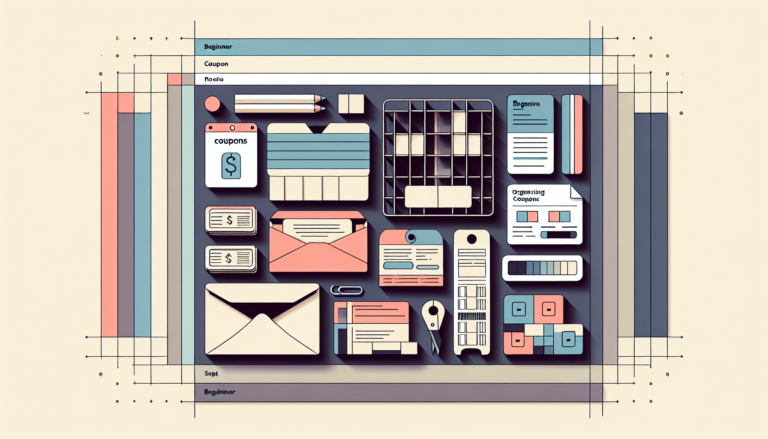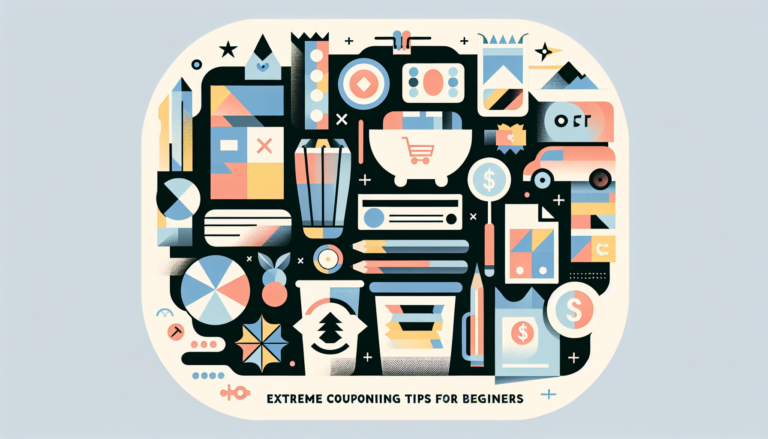Elevate Your Savings: Fresh Out-of-the-Box Money-Saving Techniques
Make Money While Tidying Up
On your mission to save a few bucks, why not turn your home into a mini goldmine by cleaning up and cashing in? Think of it as a double-duty project—tidy house and a beefed-up wallet—by selling and donating stuff that’s just gathering dust.
Turn Clutter into Cash
Got things laying around that you don’t use anymore—like that old blender or those jeans you never wear? Bet someone out there is hunting for exactly what you’re getting rid of. Instead of tossing them, sell them and watch the cash roll in. You’ll clear out some space and gain a little extra money on the side. Talk about a win-win!.
There’s a whole bunch of spots to sell your old stuff. Check out online sites, have an old-school yard sale, or hit up consignment shops. A good rummage through your stuff might surprise you with just how much you own that you don’t need—and how much people are willing to pay for it.
Donate and Uplift
Decluttering can be a hero move too! Skip the trash and think about giving to those in need instead. What you don’t need could light up someone else’s life. This kind of giving beautifies your space while spreading kindness like confetti.
By donating for good, you’re not just tidying up; you’re making a difference. Tons of places happily accept donations—from local shelters and thrift stores to websites that connect you with folks who need a bit of extra help. When you donate, aim for items that are still usable so they can be loved again by others.
Incorporating this clear-out-and-cash-in strategy into your money-saving goals doesn’t only make room at home; it also inches you closer to your financial dreams. Plus, it’s heartwarming to know you’re making your home happier and helping others too.
Financial Tracking and Cutting Back
Getting a grip on your money isn’t just about stashing cash under the mattress. It’s about knowing where your dollars go and figuring out where you can tighten the purse strings. In this little adventure towards financial steadiness, we’re diving into two major plays: getting a budget rolling and making sure your savings do the hard work for you, without any heavy lifting from your end.
Starting a Budget
Starting a budget is the no-nonsense way to take charge. This is where you lay out what you make and what you spend, spotting where you can roll back on those splurges. It’s like getting an x-ray of your finances. By having a good look-see at what’s flowing in and out, you position yourself to make smart money moves. Bet you didn’t know that daily coffee habit was costing you an arm and a leg! But with a budget, you’re the boss. Want to know more about living on a budget without feeling strapped? Check out our guide on budget-friendly living strategies.
Automating Savings
Made it this far without nodding off? Good. Because automating your savings is a clever trick we want you to know about. By setting automatic transfers on the day your paycheck hits the account, you save without lifting a finger. Money moves to savings faster than you can say “Just one more drink.” It’s like paying your future self first and dodging the temptation to blow it (Erin Gobler).
Tools like budgeting apps make this part all slick and streamlined. Not only will they help shuffle your money where it needs to go, but they’ll throw notifications your way when you’re spending too much on takeout or impulse Amazon buys. They even sort your spending into neat categories. Trust me, it’s like having your own money manager on speed dial. Get a load of other clever budgeting tricks in our piece on uncommon budgeting strategies.
Taking the pay-yourself-first approach means making sure you save before splurging on other stuff. It’s a hit among the money-savvy folks out there (U.S. Bank). This practice is a godsend for folks aiming at dreams like nabbing a house or chilling till retirement. You automate those deposits, life gets easier; it’s as simple as that.
So by getting serious with your budget and setting up autofill savings, you’ll not only manage your money like a pro but also watch your savings grow while you sit back and relax.
Utilize Money-Saving Tools
Handle your hard-earned cash with nifty gadgets that can squeeze every penny for what it’s worth. We’re diving into the world of money-saving apps and price-matching tricks—they’re real treasures for those aiming to plump up their piggy banks without too much effort. We’re gonna check out two smart ways to do just that: nifty apps and smart shopping moves.
Money-Saving Apps
These handy apps are like your personal cash-minders. They not only help trim down those sneaky monthly expenses but also toss a few bucks back your way on the stuff you buy every day. Totally user-friendly, these apps let you peek at where your money’s slipping away, how much you’re socking away, and score sweet deals like a seasoned pro.
Set it and forget it—automating your savings with these apps means your paycheck does the heavy lifting, sliding dollars into a savings account without lifting a finger. When these apps become part of your daily routine, they help clear up your budget, lay out where you can cut back, and make savvy decisions so your finances stay rock solid.
| Money-Saving App | Features | Benefits |
|---|---|---|
| Cashback Apps | Get rebates on what you buy | Easy-peasy savings boost |
| Budgeting Apps | Know what you spend, set goals | Get a clear picture of your finances |
| Coupon Apps | Must-have deal finders | Keep cash in your pocket daily |
Scope out different apps to see which ones suit your fancy and spending style. Keep an eye out for any app updates or new tricks to stay on top of your savings game.
Comparison Shopping
Don’t just settle on the first price tag you spot. A little hunting can save you big bucks. Whether you’re stocking up on cereal or splurging on electronics, comparing what different stores are asking for can save your wallet lots of pain over time. This makes sure every dollar you drop is on something worth it.
A report says smart companies save big by being clever with spending. Tools like Fyle help them keep track of where the money’s flowing and chilling unnecessary spending.
| Comparison Shopping Tip | Benefits |
|---|---|
| Online Price Check Tools | Bagging the best deals from loads of shops |
| Grabbing Coupons & Codes | Snagging deals and slashing prices |
| Shopping Sale Events | Catching great prices and promos |
Comparison shopping is your secret weapon—get what you need without breaking a sweat or the bank. Use price comparison websites and handy browser helpers to track down the deals and tops up your savings easily.
Bring these clever tools and smart tactics into your financial playbook. They take the guesswork out of budgeting and saving, setting you on a path to cash confidence and a comfy cash cushion. Yes, money management can be snappy and strategic with the right tools—letting you own your financial future.
Smart Money Moves
Saving money isn’t just a skill—it’s an art, and getting it right can make a world of difference in your bank account. We’re talking about two savvy strategies that’ll have your piggy bank doing the happy dance: loan refinancing and cunning cutbacks for big businesses.
Loan Refinancing
If you’re drowning in high interest rates on loans for things like your car, school, or a shopping spree a little too big for the wallet, refinancing could be your liferaft. Platforms like Credible are your buddy in finding deals with rates so friendly, your monthly statements will start to look more like a good night’s sleep than a headache (Erin Gobler).
When you play your cards right, refinancing might just put an end to that wallet squeeze, giving you a little more freedom to breathe (and maybe even splurge on that extra guac). Make sure you dig through the fine print with a magnifying glass to ensure these new terms are lining up with your financial compass.
Cost-Saving Strategies for Large Businesses
When it comes to big companies, expenses can run wilder than kids in a candy store. That’s where strategy steps in. Modern expense management software is the secret sauce to slashing costs without cutting corners on quality.
Take a cue from Fyle’s playbook: automate those pesky expense reports to boost speed, accuracy, and transparency. Clear the admin clutter, tighten those purse strings, and watch as your financial efficiency shines like a buffed-up nickel.
And don’t stop there—technology is your friend. Let automation be the genie that handles routine tasks, while cloud solutions keep IT costs from ballooning. With smart cash flow forecasting and managing debts like a pro, businesses can find that perfect harmony between smart cost management and top-notch operations (FyleHQ).
These strategies aren’t just about saving a buck—they’re about setting the stage for a comfy, secure financial future where you can focus on what really matters: life’s little joys and maybe even a grander adventure down the road.
Efficient Energy Use
Let’s talk cash-savers and earth-protectors. If you’re eyeing ways to trim down those pesky monthly bills, getting a grip on your energy use at home is a solid move. A little bit of effort here can bulk up your bank account over the long run.
Home Energy Saving Tips
Think of this as your cheat sheet for slicing those energy costs without much sweat. Easy tweaks at home can kick off major money-saving and planet-helping magic.
- Tweak that thermostat: The Department of Energy reckons this little trick could save up to 10% on heating and cooling. Just turn that dial down about 7 to 10 degrees for 8 good hours (CNET).
- Turn down the water heater: Set that water heater to a cozy 120°F instead of the usual 140°. You’ll see your energy costs drop (CNET).
- Ditch the ‘phantom’ power suckers: Unplug gadgets that aren’t in use. They sneakily suck up power on standby. Free up a nifty $100 a year by doing just that (CNET).
- Go energy-star shopping: Swap out old appliances for new energy-efficient ones. Look for the Energy Star symbol to ensure you’re not being bamboozled.
Electricity Bill Trimming
Aside from the homey energy hacks, a handful of specific tricks are waiting to slash that electricity bill. Here’s your trusty checklist:
- Load that dishwasher: Believe it or not, letting a modern dishwasher handle your dirty work uses a whole lot less water than scrubbing by hand.
- Swap air filters regularly: Changing your HVAC system’s air filters often can shrink its energy use by a cool 5% to 15%, as per the Department of Energy (CNET).
- Soak up the sun: Let your home bask in sunlight during the day, and say less to artificial lighting. Pop in energy-efficient LED bulbs for extra savings.
With these home energy-saving tips and smart practices to prune your electricity bills, you’ll trim down those monthly expenses. They’re wallet-friendly and Earth-caring, two birds with one stone kinda deal. Small steps today mean big savings tomorrow.
Innovative Budgeting Strategies
When folks jump into managing their money, trying out fresh tricks sometimes helps them save a few bucks and stay on top of things. Check out these nifty approaches meant for anyone looking to get better at juggling their funds.
Unique Budgeting Approaches
-
Loud Budgeting: Ever heard someone babbling about what they bought? That’s Loud Budgeting for you! Made popular by TikTok influencers, this wacky way of handling money gets you to voice out your financial transactions. It’s a bit quirky, but saying that stuff out loud makes it feel real, helping you spend wisely and save up without even realizing it. Wanna know more kooky budgeting tips? Swing by Edvisors.
-
Social Budgeting: Here, the idea is to chat about money management with a group you trust, like buddies or family. Sharing what’s hard for you, what’s working, and even getting tips can help everyone stay sharp with their cash. It’s like forming a support group for your wallet—mutual encouragement makes all the difference. Find out more tricks at Edvisors.
-
Digital Budgeting: Gadgets and gizmos these days make managing money a breeze. Use budgeting apps and online banking to keep an eye on your money. They show where it’s going, set up alerts, and even organize everything neatly for you. Sounds too techy? Nah, it’s just making your money management smarter and easier!
-
Participatory Budgeting: This one’s about gathering everyone involved—be it family or a community—for picking financial goals together. It’s like a team game where everyone pitches in and gets a say. You’d be surprised how collective ideas lead to better spending habits and make everyone more responsible.
-
Scenario Budgeting: This is all about planning for those what-if situations. Think of making several budgets for times when you might get a pay bump, or maybe face unexpected costs. Always being ready helps you manage any financial curveballs life throws your way, letting you steer your finances with ease.
Savings Prioritization
-
Pay-Yourself-First Budgeting: Forget what they say about leaving savings for last. With this method, you pocket some savings first before anything else. At the end of the day, aiming for dreams like owning a house or retiring comfy makes putting money aside now worthwhile.
-
Zero-Based Budgeting: This one’s a taskmaster. You slice every dollar and give it a job. It’s about figuring out what’s crucial and what can wait, ensuring you’re spending those greens where they matter most. Perfect for those whose income might shake up every once in a while.
-
Envelope Budgeting: It’s old-school but still cool. You take actual cash, pop them into envelopes marked for different needs like rent or fun. Once the envelope’s empty, that’s it for the month. It’s a hands-on way to keep your impulses in check.
-
Automatic Budgeting: Lazy but effective—set up automatic transfers to your savings or piggy bank accounts. This no-fuss method ensures you’re stashing something away without lifting a finger. It’s like a financial autopilot guiding you to safety.
Exploring these smart budgeting strategies and focusing on saving can really boost your money-handling skills, ease your savings efforts, and offer a tighter grip on your financial health. Toss these tips into your financial mix to keep your money moving in the right direction and lean into a future that’s financially steady.







